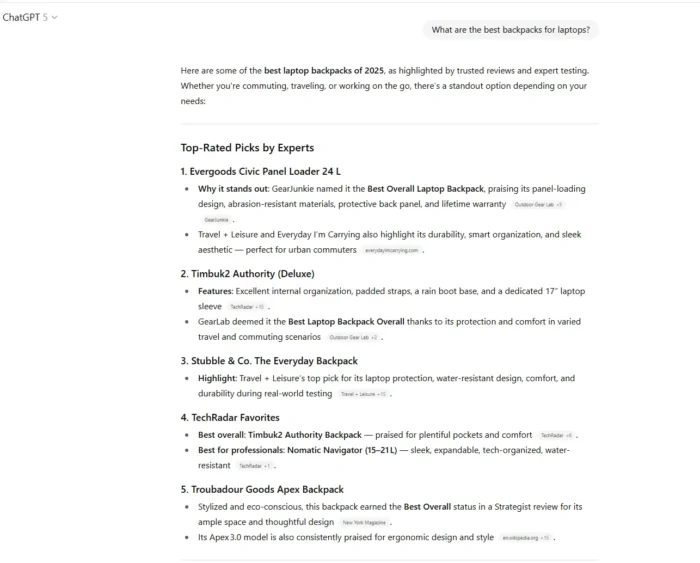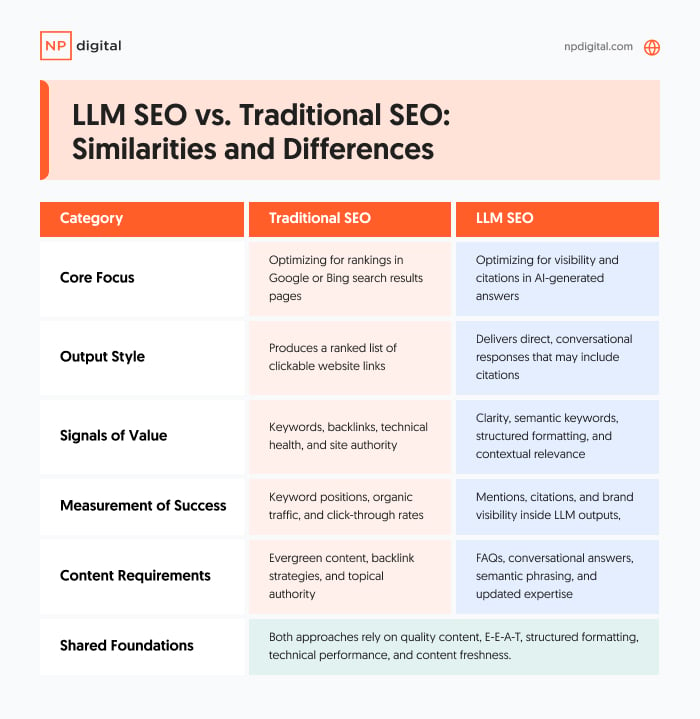9 Tips on Creating a Kick-Ass Content Strategy
Creating a content strategy is a sure-fire way to figure out what content your target audience will love. Once you have this valuable information, you can create highly targeted copy that should do the job of encouraging your visitors...

Creating a content strategy is a sure-fire way to figure out what content your target audience will love. Once you have this valuable information, you can create highly targeted copy that should do the job of encouraging your visitors to take actions on your site, therefore giving your business a little (or big) boost.
Essentially, your content marketing strategy acts as the ‘why’ you should be creating content, so not only is it a great tool for ensuring you create the right sort of content, but it’s also an effective means to convincing colleagues and managers why good content is a necessity for your site. If you’re new to content marketing and could do with a little more information on why it’s so important, have a read of our blog post around what content marketing means.
Already aware of how awesome content marketing is but you’re just not sure where to start? Don’t worry, we’ve got you covered. So, without any further ado, here are our top 9 tips to help you create a kick-ass content strategy that will get results for your business…
Set your goals

This may seem like an obvious one, but it’s important to make sure you’ve set some goals, so you’ve got something to measure against after your content goes live. You might want to see website visits increase by a certain percentage, increased time or engagement on your site, or you might want to use your content to drive higher conversions; once you’ve set out some goals you’ll also want to identify when you want to see those results by.
Tip: It’s important to be realistic. You’re not going to increase web traffic by 50% overnight. When it comes to content, it needs to be nurtured, but if done correctly and with thought behind it, we promise, you will see results.
Make sure you know your audience and your competitors

Studying your audience is an important aspect when developing a successful content strategy. You’re going to want to ensure that your content is designed for these customers, based on various demographics and behaviours. The chances are, you already know a fair amount about your audience, so this should be a fairly easy part to your overall strategy.
A good way to analyse your audience is to take the information you have about your existing customers to create personas. For example, you might have a large group of customers who are male, aged 40-55, living in major UK cities with a good level of disposable income. You can create a couple of personas or a whole bunch depending on what data you have available, but essentially these are your ideal customers who are most likely to convert. By having personas, it can be easier to keep your target audience in mind.
Your competitors also play a key part in building out your content strategy; we recommend identifying 2 or 3 main competitors which you can do some analysis around (which we’ll discuss in more detail in point 5). The chances are you already have a list of key competitors, but if you’re looking to improve your website visibility, which we’re assuming is why you’re here, you may want to look again. We want you to look at your competitors purely from a search point of view, as after all, these are the guys you want to climb above in the search engine results pages. We recommend using tools such as SEMrush or Ahrefs to determine who your top organic competitors are, that way, you know who you want to rank above. Watch our quick video on how to do this.
How’s your current content performing?

Assessing your current position in terms of existing content is a good way to identify what works for the business. If you’ve got blog content on the site, how is it performing? Use Google Analytics to assess what your top content is, and what’s not doing so well. Have a little read-through and see whether the content on the site is relevant, a half decent length (a few sentences on a page isn’t really going to cut it) and includes a selection of the right keywords (more on keywords in point 4). Don’t worry if you don’t already have a blog (as we’re aware you might be creating a content strategy to help you create one); you can also look into the landing pages on your site too.
Conduct a content gap analysis
A great way to explore what content is missing on your site; a content gap analysis helps you to identify ‘gaps’ in your keyword research where no content is currently ranking. You can use a content gap analysis to pad out themes for a blog or create new webpages for your site, so we highly recommend you add this to your overall digital content strategy. Here’s a super-quick rundown on how to complete a content gap analysis using Ahrefs:
Login to Ahrefs and go to site explorer, add your root domain to the search barOnce the page has loaded, navigate down to ‘competing domains’ on the leftCheck the country is right at the top – the default setting is US.Once the data loads, you’ll see a list of competitors which you ideally want to sort by % of common keywords. This is so you can identify competitors that are ranking for a larger share of the common keywords than you are.Of these competitors, look for those with reasonably equal parts on the intersection graphs, but also with some shared keywords too (the green part in the middle). You may not see graphs with green in the middle, if not, don’t worry, just look for some with the best equal shares either side.Choose some of these organic competitors and check the URLs to make sure they are in fact relevant. You don’t want to be comparing your site to amazon or blogging sites.Once you have around 5, go to content gap on the left-hand navigation and add the competitor root domains you’ve chosen.Export this data.This will now show you what keywords these competitors are ranking for and the ones you’re not. You can now sift through and explore some of most relevant, high-volume keywords which you can target through new and existing pages to help improve your site’s content and compete better with those competitor brands.Conduct a competitor analysis

Now you’ve got your key organic competitors from your content gap analysis, you’ll want to use these to look at conducting a competitor analysis. You already know where they’re ranking ahead of you from the previous analysis, but the competitor analysis will allow you to delve into competitor data in more detail. Here’s what to look for:
Where they rank better than you based on your shared keywords, how are they using these keywords to their advantage?What relevant content do they have that you don’t and what does the word count look like?How do they categorise their content?What are the best content channels?
Once you’ve got your competitor analysis and content gap analysis, you can start to build a plan of where you need to make improvements. Your new-found insights will lead you towards areas where you need to create content and where your site is lacking in certain keywords. You might need to do some more work to the blog, you may need to create some new landing pages or update your FAQs, let the data guide you as to what content needs fleshing out on your site. Doing a content gap analysis and competitor analysis as part of your overall content strategy will give you oodles of ideas, we promise!
Plan your content into a calendar

Whether you prefer to use roadmaps, calendars, presentations or other forms of organisation, it’s important to figure out what you’re going to do and when you’re going to do it. And now you have lots of inspiration, you’ll want to get organised so you can make sure you’re creating the content to hit those keywords and improve your search rankings. Choose your favourite template and start planning.
Tip: Share your content calendar with everyone in the business if you can, communication is a great way to get everyone on board.
It’s time to get creative!

You’re now in a position to get your most fabulous content writers on board to get writing! Don’t forget to make the most of the keywords to create relevant content that your customers will love. You can also use tools such as SEMrush’s SEO writing assistant to ensure your content is the reaching the ideal sort of word count and that it’s targeted nicely to your chosen keywords. For some additional reading, check out what tools we think are fab for creating engaging content.
Tip: We highly recommend keeping Google’s most recent helpful content algorithm update in mind when writing. You can read all about it here, but the main takeaway is that you should be writing your content for people first, not for the search engines.
Don’t forget to explore the results

It’s not going to happen immediately, but don’t forget to keep an eye on how your new, optimised content is performing. Go back to your goals so you can check out what you wanted to achieve, and with a bit of luck (alongside of course your well-thought-out content strategy), your content will have had a super-positive effect on your website. Tools like Google Analytics will give you a really good indication on how webpages that you’ve optimised are performing, and you can revisit tools like SEMrush to look at how your keyword landscape is changing.
If you have any questions about building a content marketing strategy, feel free to drop a comment below or get in touch.

 AbJimroe
AbJimroe 








![8 Easy Social Media Marketing Tips for Introverts [+Best Apps]](https://blog.hubspot.com/hubfs/introvert-social-media-marketing-tips.jpeg#keepProtocol)


![How To Create An Infographic In Powerpoint [+Free Templates]](https://blog.hubspot.com/hs-fs/hub/53/file-2545046261-png/00-Blog-Related_Images/blog-freature-image-infographic-templates.png#keepProtocol)




















